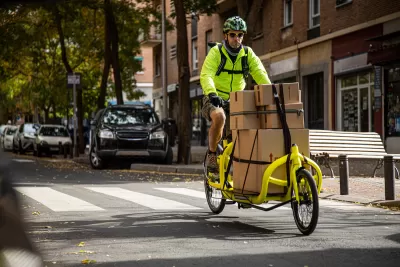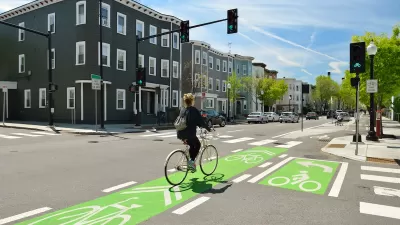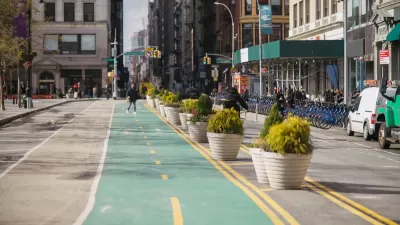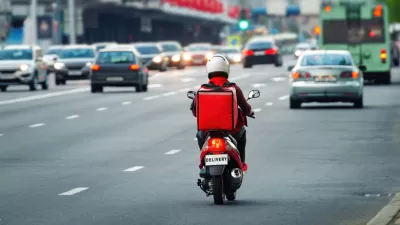Industry leaders want cities to consider delivery bikes when crafting bike policy and building infrastructure.

As more companies begin to include cargo bikes in their delivery fleets, cities should build bike infrastructure that accounts for this growing form of mobility, writes Skip Descant in GovTech, noting that “As both the public and private sectors look for new answers to serve the growing demand for deliveries and the strain full-size vehicles place on traffic levels and curb management, bikes are appearing more attractive.”
Industry experts say cities can support bike delivery by creating neighborhood delivery hubs with options for package storage and e-bike charging. “Industry leaders say that as the micro-delivery-vehicle industry becomes more mainstream, logistics companies and cities will need to collaborate to create a regulatory environment that establishes cargo-bike delivery as a legitimate logistics line, while ensuring safety for operators and the public.”
FULL STORY: Build the Bike Lanes and the Delivery Bikes Will Follow

Trump Administration Could Effectively End Housing Voucher Program
Federal officials are eyeing major cuts to the Section 8 program that helps millions of low-income households pay rent.

Planetizen Federal Action Tracker
A weekly monitor of how Trump’s orders and actions are impacting planners and planning in America.

Ken Jennings Launches Transit Web Series
The Jeopardy champ wants you to ride public transit.

Sacramento Plans ‘Quick-Build’ Road Safety Projects
The city wants to accelerate small-scale safety improvements that use low-cost equipment to make an impact at dangerous intersections.

How Project Connect Would Change ‘The Drag’
A popular — and sometimes deadly — Austin road will exchange car lanes for light rail.

Milwaukee Road to Get Complete Streets Upgrades
The city will reduce vehicle lanes and build a protected multi-use trail including bioswales and other water retention features on its ‘secret highway.’
Urban Design for Planners 1: Software Tools
This six-course series explores essential urban design concepts using open source software and equips planners with the tools they need to participate fully in the urban design process.
Planning for Universal Design
Learn the tools for implementing Universal Design in planning regulations.
Ada County Highway District
Clanton & Associates, Inc.
Jessamine County Fiscal Court
Institute for Housing and Urban Development Studies (IHS)
City of Grandview
Harvard GSD Executive Education
Toledo-Lucas County Plan Commissions
Salt Lake City
NYU Wagner Graduate School of Public Service





























